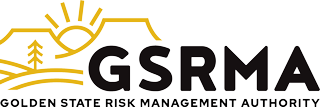The insurance landscape across the United States, particularly in California, is in turmoil. What’s increasingly being referred to as a ‘crisis’ has evolved over recent years and shows little sign of easing. A mix of natural disasters, large legal settlements, challenging regulations, and inflation has led to an unstable insurance market. Insurers are responding by cutting back on coverage, hiking up prices, or exiting the market altogether at an alarming pace.
What You Can Do
While it is easy to feel helpless about the market overall, there are steps we can take to make the best of the situation.
Your district has already taken an important step by becoming a member of GSRMA, a public entity risk pool that insures more than 320 public entities within California. Since its creation in the late 1970s due to a similar general liability insurance crisis, public entity risk pools have proven to lower insurance costs for member districts compared to private carriers. In addition, a well-funded pool, such as GSRMA, has several tools available to navigate tough times.
But first, what can our individual pool members do to help themselves through this? Our members have control over two critical components that affect their insurance costs:
Exposure and experience.
- Let’s break down ‘exposure,’ a key factor in your insurance costs. Essentially, it’s about how much risk you’re exposed to, usually determined by your payroll and the value of insured assets, like property. When your district’s payroll goes up, so does your exposure and insurance bill. The same happens if you acquire valuable new assets, like vehicles, or when the appraised value of your property increases. Understanding this helps in planning for and managing future insurance expenses.
- Next is ‘experience’ or losses — a significant factor affecting your insurance premiums. Here’s the simple truth: the fewer and smaller the losses you experience, the lower your insurance costs tend to be. Sure, accidents happen, and sometimes, you can do little about it. However, there’s good news. You have more control than you might think. Investing in loss prevention and risk management can significantly reduce your incidents. This, in turn, can lead to lower insurance costs. As rates climb, it becomes even more crucial to focus on measures that can help keep your losses to a minimum.
- Take employment practices as a case in point — they represent a substantial risk for our members. Issues like discrimination, harassment, and wrongful termination not only disrupt operations but also cost a lot to resolve. The silver lining? Most of these are preventable. You can significantly mitigate these risks by adopting the right policies, processes, and legal frameworks — most of which are offered to GSRMA members at no cost.
What We’re Doing
Since risk pools exist for the benefit of their members, their challenge is to take significant steps to keep member rates down. For example, to tackle rising costs, GSRMA is taking on more risk collectively. Risk pools like ours normally purchase insurance to shield against big, unexpected losses. By willingly taking on a bit more risk ourselves, we can cut down on the need to buy additional outside insurance. This strategy is key in managing and even reducing the growing expenses of excess insurance, but only if our members’ losses are kept under control.
With this in mind, we have increased our investment in risk control and loss prevention services. By doubling our risk control staff and completing a significant software system upgrade, we are better prepared to guide our members with their loss prevention initiatives. The software will help us identify risks and manage their remediation, while increased staff can better provide individualized support to our member districts.
Because of these initiatives, we expect to continue returning excess funds in the form of dividends to our members. Where insurance companies return excess profits to their shareholders, our shareholders are our members. We have been able to return $1.3 million in dividends to our members in the past ten years. These dividends are critical in offsetting premium increases.
We also offer financial incentives to encourage best practices among our members. For instance, members can get back up to 10% of their annual insurance expenses by successfully participating in our Risk Management Accreditation Program. Plus, we provide plenty of training—online, on-site, and regional—at no charge. Our toolkit for members includes contract reviews, access to an HR legal hotline, and reimbursement for certain training. All these resources are designed to help you minimize losses without additional costs.
Moving Forward Together
The path through the current insurance landscape might not be clearly marked, but one thing is clear: it’s an opportune moment for a deep dive into risk management. We’re here to support you every step of the way. By staying positive and open to revising our risk management strategies, we’re not just aiming to weather the storm — we aim to come out ahead, stronger, and more prepared than ever.

